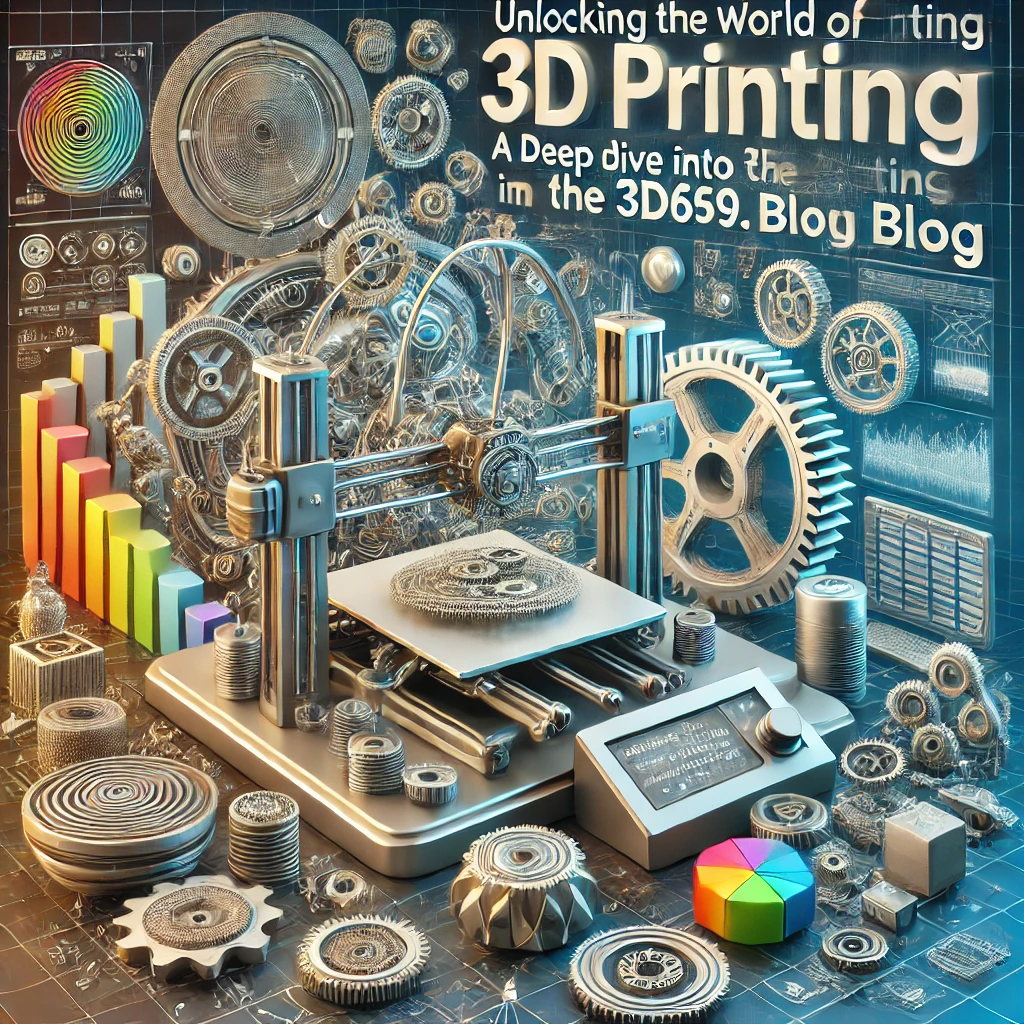In recent years, 3D printing has transformed industries, revolutionizing how we create and innovate. As technology advances, staying informed becomes crucial. That’s where the 3d659.com blog comes in. This blog is a valuable resource for anyone interested in the world of 3D printing, offering insights, tutorials, and news that cater to both newcomers and seasoned professionals. In this article, we’ll explore various aspects of 3D printing, highlighting what makes the 3d659.com blog a go-to destination for enthusiasts.
What is 3D Printing?
3D printing, also known as additive manufacturing, is a process that creates three-dimensional objects from digital files. The technology builds objects layer by layer, allowing for intricate designs and prototypes. Unlike traditional manufacturing methods that often waste materials, 3D printing is more efficient and environmentally friendly.
Benefits of 3D Printing
The benefits of 3D printing are vast and varied. Here are a few key advantages:
- Customization: 3D printing allows for easy customization of designs, making it ideal for industries like healthcare, where tailored solutions are often necessary.
- Cost-Effective Prototyping: Creating prototypes with 3D printing is faster and cheaper than traditional methods. This speed enables quicker iterations and innovations.
- Reduced Waste: Since 3D printing only uses the materials needed for the final product, it significantly reduces waste compared to subtractive manufacturing processes.
- Accessibility: With advancements in technology, 3D printers are becoming more accessible to individuals and small businesses, democratizing manufacturing.
Practical Applications of 3D Printing
3D printing is not just a trendy technology; it has practical applications across various sectors:
- Healthcare: From custom prosthetics to bio-printing organs, 3D printing is making waves in the medical field. The 3d659.com blog covers many of these innovations, showcasing how they can improve patient care.
- Automotive: Car manufacturers use 3D printing for rapid prototyping and creating intricate parts that would be difficult to produce using traditional methods.
- Aerospace: The aerospace industry benefits from lighter components made through 3D printing, improving fuel efficiency and overall performance.
- Consumer Goods: Many companies are using 3D printing to produce customized products, such as shoes or home decor items, allowing consumers to express their unique styles.
Future Trends in 3D Printing
As technology evolves, so does the landscape of 3D printing. Here are some future trends to watch:
Bioprinting:
The ability to print biological materials is gaining traction. Scientists are exploring how to create living tissues, which could revolutionize organ transplants.
Sustainable Materials:
The search for eco-friendly printing materials is ongoing. Innovations in bioplastics and recyclable materials are becoming more prevalent.
Increased Speed:
As technology improves, the speed of 3D printing will increase, making it more efficient for large-scale production.
Integration with AI:
Artificial intelligence will likely play a role in optimizing designs for 3D printing, improving efficiency and reducing errors.
Metal 3D Printing:
As industries like aerospace and automotive look for stronger, lighter materials, metal 3D printing is expected to grow, offering new possibilities for complex designs.
Common Mistakes in 3D Printing
While 3D printing is accessible, many beginners make common mistakes. Here’s how to avoid them:
Ignoring Calibration:
Properly calibrating your 3D printer is crucial for achieving quality prints. A well-calibrated machine leads to better results.
Choosing the Wrong Material:
Each material has unique properties. Understanding which material suits your project can save time and frustration.
Good design is essential for successful 3D printing. Make sure your digital files are optimized for printing, avoiding overly complex structures that may fail.
Neglecting Post-Processing:
Many prints require finishing touches, such as sanding or painting, to achieve the desired look. Don’t skip this important step!
Comparative Analysis of 3D Printers
Choosing the right 3D printer can be daunting, given the many options available. Here’s a quick comparison of popular types:
- FDM Printers: These are widely used for their affordability and ease of use. They are great for beginners and general-purpose printing.
- SLA Printers: Known for their high precision, SLA printers use resin and are ideal for detailed prints. However, they can be more expensive and require careful handling.
- SLS Printers: These printers use powdered materials and are excellent for creating complex designs. They are typically used in industrial applications.
When exploring 3D printing, the 3d659.com blog provides insightful comparisons and reviews that help users make informed choices.
User Testimonials and Case Studies
Real-world experiences can provide valuable insights. The 3d659.com blog features numerous testimonials from users who have successfully implemented 3D printing in their projects. These stories highlight the challenges faced and solutions found, offering inspiration to others considering this technology.
For example, a small startup might share how they utilized 3D printing to create custom packaging, allowing them to stand out in a competitive market. These case studies serve as practical examples of the potential 3D printing holds.
Conclusion
In conclusion, the 3d659.com blog is a treasure trove of information for anyone interested in 3D printing. With its comprehensive coverage of topics, practical applications, and insights into the latest trends, it stands out as a reliable resource. Whether you’re a beginner or a seasoned professional, this blog has something for everyone. As the world of 3D printing continues to evolve, staying informed through platforms like the 3d659.com blog is essential for leveraging this technology to its fullest potential.
